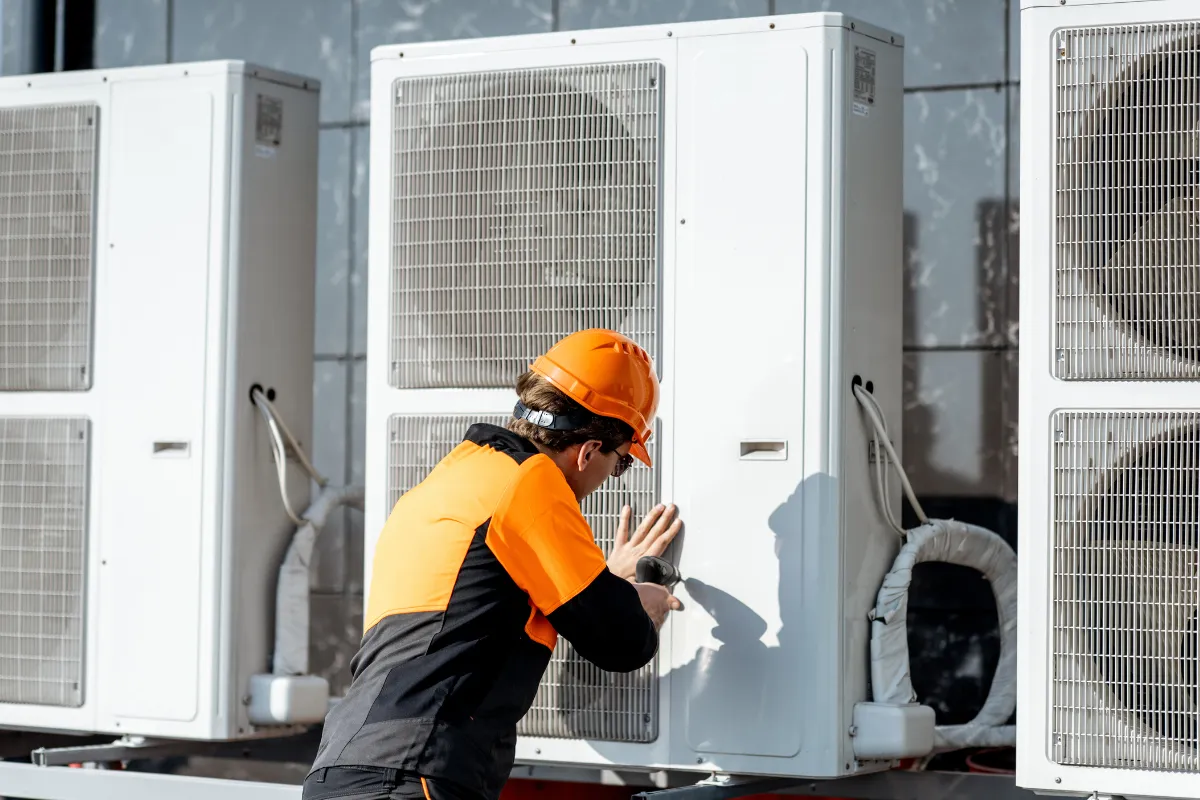
From gleaming corporate campuses to bustling distribution centers, the spaces where we work are more than buildings — they’re living, breathing systems.
And just like any system, they thrive when maintained with foresight, care, and precision. This is especially true when the seasons shift, bringing with them new challenges and opportunities.
For asset and facilities managers overseeing complex environments, seasonal preventive maintenance is not just another box to check. It’s a strategic lever. Done right, it can reduce operational risk, extend asset lifespans, and free up teams to focus on value-adding work rather than reactive fixes.
The turning point: Winter to spring, summer to fall
Let’s pause on a moment many managers will recognize: the first unexpectedly warm spring day after a punishing winter. The HVAC systems are still tuned for cold. A rooftop inspection reveals pooling water from snowmelt. A few cracks have started in the concrete walkways. You can feel the shift in your bones and see it in your work orders.
That seasonal turn is more than a weather change — it’s the cue for a tactical transition. A pivot in tactics to keep the machine well-oiled. Preventive maintenance that is responsive to these changes is about being ready and creating the conditions for performance, resilience, and safety.
In many enterprises, especially those with large, distributed sites, this shift must be orchestrated as seamlessly as possible. Work orders, vendor coordination, compliance checks, and data from smart sensors all need to align. The goal isn’t just to fix things before they break. It’s to ensure the environment continues to serve the people and processes it houses.
The architecture of a seasonal strategy
The most effective seasonal maintenance programs are built on three pillars: anticipation, calibration, and communication.
Anticipation means understanding your facility’s seasonal vulnerabilities before they manifest. This is where historical maintenance data, weather trends, and real-time monitoring tools come into play. Are certain air handlers more prone to failure after cold snaps? Do your irrigation systems require flushing before the spring thaw? Mapping these pain points puts you in a better position to be ultra proactive.
Calibration is the act of adjusting systems, schedules, and resources to the demands of the season. This could be recalibrating building management systems for temperature fluctuations, scheduling roof inspections before storm season, or reviewing backup power readiness during wildfire-prone months.
Communication is what ensures all of this effort translates into smooth operations. Facilities leaders need to connect with tech teams, external vendors, and often, occupants of the space. When maintenance activities are seen not as disruptions but as investments in continuity, engagement improves across the board.
Making the case for preventive investment
Convincing leadership to fund seasonal preventive programs can sometimes be a challenge. But facilities teams that frame their proposals in terms of risk mitigation, operational efficiency, and business continuity tend to gain more traction.
One approach is to quantify the cost of unplanned downtime versus the investment in preventive work. A single HVAC failure during peak summer in a data center or healthcare facility can result in massive disruptions. When the potential costs are laid alongside the relative affordability of scheduled tune-ups and inspections, the value becomes evident.
Moreover, preventive maintenance has a multiplier effect. It enhances employee comfort, supports ESG goals through energy efficiency, and contributes to the organization’s brand image by keeping environments clean, functional, and welcoming.
Disaster planning: The crucial companion
While seasonal maintenance focuses on the expected, disaster planning prepares for the unpredictable. These two practices are more interconnected than they might appear.
Every regional climate comes with its own risks: hurricanes in the Southeast, wildfires in the West, ice storms in the Midwest. A sound seasonal maintenance program helps facilities withstand these events, but disaster planning takes it further by laying out what happens if systems do fail.
An effective disaster preparedness plan includes contingencies for power outages, supply chain disruptions, and emergency staffing. It also maps out roles and responsibilities, communication protocols, and recovery timelines.
Here’s where the synergy happens: seasonal inspections can feed into disaster plans. For instance, generator load testing done as part of spring maintenance can verify whether backup systems will perform during summer blackouts. Roof inspections can identify vulnerabilities before hurricane season.
The most resilient facilities treat seasonal maintenance and disaster readiness as twin components of a single strategy. One supports performance in normal conditions; the other ensures continuity in extraordinary ones.
A story of leadership, not just logistics
Let’s return to the facilities manager walking through a site at the turn of the season. Maybe it’s dawn. There’s a quiet rhythm to the place before the day begins. That manager is not just ticking off a checklist. They’re interpreting the language of their environment. Listening to what the building needs. Forecasting what it will face.
That’s the real power of seasonal preventive maintenance. It’s not only about technical execution; it’s about leadership. It’s about creating stability in the face of constant change. And in large enterprises, where facilities underpin every other function, that stability is invaluable.
As technology advances, with smarter sensors and integrated Computerized Maintenance Management System (CMMS) platforms, the role of the facilities team becomes even more strategic. Their insights shape the workplace experience, safeguard assets, and directly influence sustainability and cost efficiency.
Looking ahead
There’s no such thing as a “perfect season” for facilities teams. Each one brings its own checklist, its own cadence, and its own risks. But there is a perfect mindset: proactive, collaborative, and data-driven.
By building a strong seasonal maintenance program that feeds into broader risk and continuity planning, facilities managers can turn seasonal transitions into opportunities for progress. In doing so, they don’t just manage assets — they lead systems, support people, and steer organizations forward.
In the end, the best stories told by facilities are the ones that never make the news: no outages, no crises, just seamless support for the work within.
Learn more about how Eptura Asset can help shape the story of your facility.








